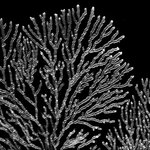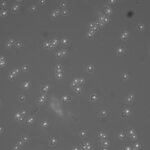Genetics & Molecular Biology

Geneticists have tackled a question that has perplexed humanity since the dawn of time: does love at first sight truly exist?
Maybe, according to a study published in the April 2009 issue of the journal GENETICS. A team of scientists from the United States and Australia say they have discovered that, at the genetic level, some males and females are more compatible than others, and that this compatibility plays an important role in mate selection, mating outcomes, and future reproductive behaviors. In experiments involving fruit flies, the researchers found that before mating, females…

Today, if you like playing with electricity, you can hop over to Amazon and buy the Extreme Snap Circuits set and put together transistors, switches, lamps, motors, resistors, and capacitors to build all sorts of fun projects, from an auto-off night light to the perpetually entertaining space war timer. More ambitious engineers can buy off-the-shelf parts to build appliances, computers, and control systems for Boeing's 787 Dreamliner.
What if you could engineer biology this way? What would you build? Physicist and scientific prophet Freeman Dyson would love to build genetically engineered…

Some regions of our genomes are under permanent lockdown because they are hazardous to our health - or at least the health of our future offspring. These secured regions include large swaths of parasite-infested DNA - DNA that contains transposable elements, virus-like genetic parasites that have the ability to hop around the genome and cause harmful mutations.
Because out of control transposable elements are a major danger, cells (ours and those of most other organisms) have an elaborate maximum-security system for shutting these bad boys down. Just how this lockdown system works is an…

A team of researchers from the Massachusetts General Hospital Center for Engineering in Medicine (MGH-CEM) has found the first evidence of cell-to-cell communication by amino acids, the building blocks of proteins, rather than by known protein signaling agents such as growth factors or cytokines. Their report will appear in an upcoming issue of the FASEB Journal and has been released online.
"We were taken by complete surprise," says Rohit Jindal, PhD, a postdoctoral fellow at MGH-CEM and the paper's lead author. "Past reports have implicated various growth factors and the extracellular…

Behind every major scientific effort is a story. Beadle and Tatum's story is one of persistence. They began with a hypothesis: each gene causes the production of a single enzyme, and that enzyme catalyzes a biochemical reaction within an organism.
The seeds of this hypothesis were spawned by Sir Archibald Garrod, who reported in 1909 that alkaptonuria - an inherited condition in which the urine is colored dark red by the chemical alkapton - results from a single recessive gene, which causes a deficiency in the enzyme that normally breaks down alkapton.
After graduating from Cornell in 1931,…

Some fun with microscopes and fluorescent proteins: in the image below, you can watch what brewer's yeast does with its DNA as it reproduces itself. This is the microbe that ferments your beer and wine, and makes your bread rise.
The fluorescent spots are from a histone protein hooked up to a green fluorescent protein. DNA is wrapped around histone proteins, so wherever the histones are, that's where the DNA is.
As cells divide, DNA has to be copied, and then one complete copy has to get passed on to the new cell. You can see that happening in some of these yeast cells, where DNA is being…

"Are you confused by all the talk about DNA and genes? We can help," claims the University of Utah. There is now no excuse for not knowing what stem cells do, what messenger RNA is, why SNPs are important, or about any other hot topic in the news about the latest biomedical research. University scientists are getting into the online communication game, although in many cases they are doing it awkwardly. What else do you expect from a bunch of pointy-headed, tweed-wearing, absent minded nerds?
The University of Utah has a web site called Learn Genetics. It's a site filled with animations that…

Mechanically, walking is a complicated feat. We take for granted that a carefree cascade of one-footed falls adds up to steady rapid locomotion.
Replicating a dynamically stable foot-over-foot walk has become a holy grail for roboticists—remember the hype about ASIMO? Researchers at Penn State are taking a shortcut to nanoscale bipedal drones thanks to to motor proteins, the walking caravan molecules within our cells.
Kinesins are a specific class of motor proteins that march along microtubules, which 25-nm strings that move cell innards like an intricate marionette waltz. Most…

Prions first made their notorious media debut in the mid-1980’s when British cattle contracted Mad Cow disease. As a result, over 150 people in Europe were infected and died from the human form known as Creutzfeldt-Jakob disease—a fatal neurological disorder with similar symptoms as Mad Cow.
Although prions are infectious agents with a bad reputation, research suggests that prions also play a role in epigenetic regulation. Recently, a Nature Cell Biology study conducted by molecular biologists at the University of Illinois at Chicago, discovered a new prion in yeast that raises further…

Insects such as honeybees and bumble bees are predictable in the way they move among flowers, typically moving directly from one flower to an adjacent cluster of flowers in the same row of plants. The bees' flight paths have a direct affect on their ability to hunt for pollen and generate "gene flow", fertilization and seed production that results when pollen moves from one plant to another. The study of gene flow has experienced more attention in part due to the recent introduction of genetically modified organisms (GMOs) into the environment.
Scientists, plant breeders, and growers seek to…